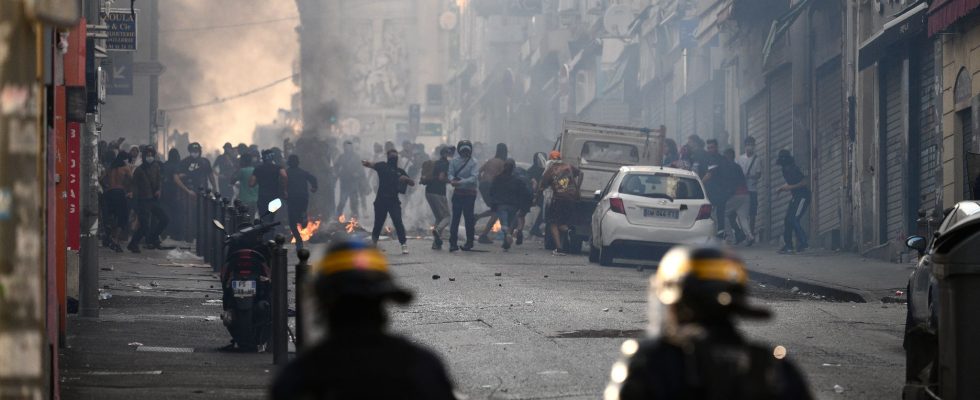Usually so quick to track down “toxic masculinity” in the barbecue or a presidential “bottom up”, Sandrine Rousseau was much more lenient about the riots in the neighborhoods. The Green MP unsurprisingly preferred to castigate police violence. She also sparked one of those controversies of which she has the secret, by suggesting “poverty” as the cause of the looting of stores. However, it is difficult not to notice the strong gender disparity in the urban violence that has shaken France since the death of Nahel: the rioters are almost all young men. “Through what I was able to observe, what elected officials and police say, there were almost exclusively young men” note for example the reporter from Le Monde Luc Bronner, who covered the violence on the ground. A “boys’ club” that only rare feminists, such as Lucile Peytavin or Virginie Martin, have yet dared to denounce.
Find the best of our Ideas and Debates articles every Sunday in “Expression”, our newsletter
In the recent Of Boys and Men (Brookings Institution Press), the British researcher Richard V. Reeves analyzes the specific problems experienced by certain men, and in particular those of the working classes and ethnic minorities. “A lot of debates about gender inequality are taking place within the elite, among the high-income super-graduates in London, Paris or Washington. But if you look at all of our societies and the working classes, the men do not prosper” he confided to the Express. The data is crystal clear. If girls are now doing much better than boys at school (84% of baccalaureate holders among the former, against 75% among the latter in France), this gap is even greater if we consider the categories less well off socio-economic backgrounds. Boys are also more likely to leave school early. And women from the poorest backgrounds are more likely to emerge than men.
Single-parent families
As always, the innate and the acquired complement each other to explain these differences between the sexes. Richard V. Reeves thus puts forward biological reasons, starting with a gap in terms of maturity between boys and girls, especially during adolescence. Girls, for example, are almost a year ahead in terms of reading skills in OECD countries. When it comes to violence, men are vastly over-represented in crime and incarceration worldwide, for example committing 95% of homicides. On average, they also take more risks, a trend that cannot be socially constructed since it has been observed in all societies throughout history.
But cultural factors are also very important, starting with single-parent families and the absence of the father, a much more significant phenomenon in underprivileged areas. According to INSEE, in 2018, 41% of minor children living in single-parent families were below the poverty line. However, boys brought up by a single parent will experience less academic success on average than if they were girls. Studies also show that geographic areas marked by high crime have a more detrimental influence on young males than females. Finally, it should not be forgotten that men belonging to ethnic minorities are often subject to more racist prejudice than women of the same origins.
Blind spot of intersectionality
For Richard V. Reeves, the left is mistaken in not wanting to see these specific problems of men, especially those from the working classes or ethnic minorities, for fear of questioning his feminist discourses on “patriarchy” as for fear of stigmatizing minorities and the poor. This is, moreover, one of the blind spots of intersectionality: assuming, for example, that a black woman from the working classes is triply discriminated against, we miss other inequalities that concern men from minorities in disadvantaged neighborhoods. .
The media treatment of these riots confirms that we are still far from the mark. To be content with a purely generational (“young people”), social (“poor”) or geographical (“neighbourhoods”) reading grid is to miss an important aspect of the phenomenon: the difficulties , which can be accompanied by recourse to violence, by some young men from the working classes and immigrants.
